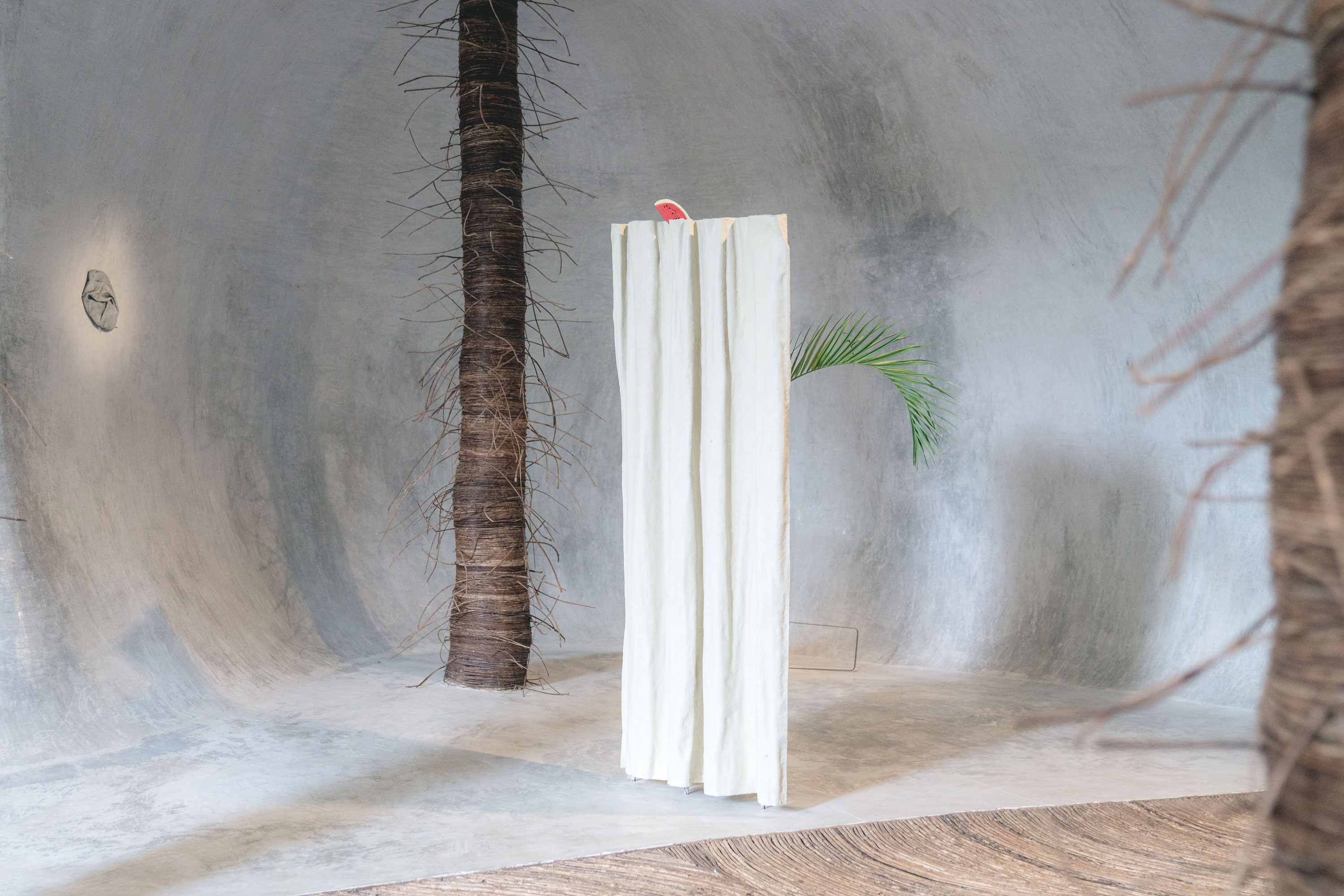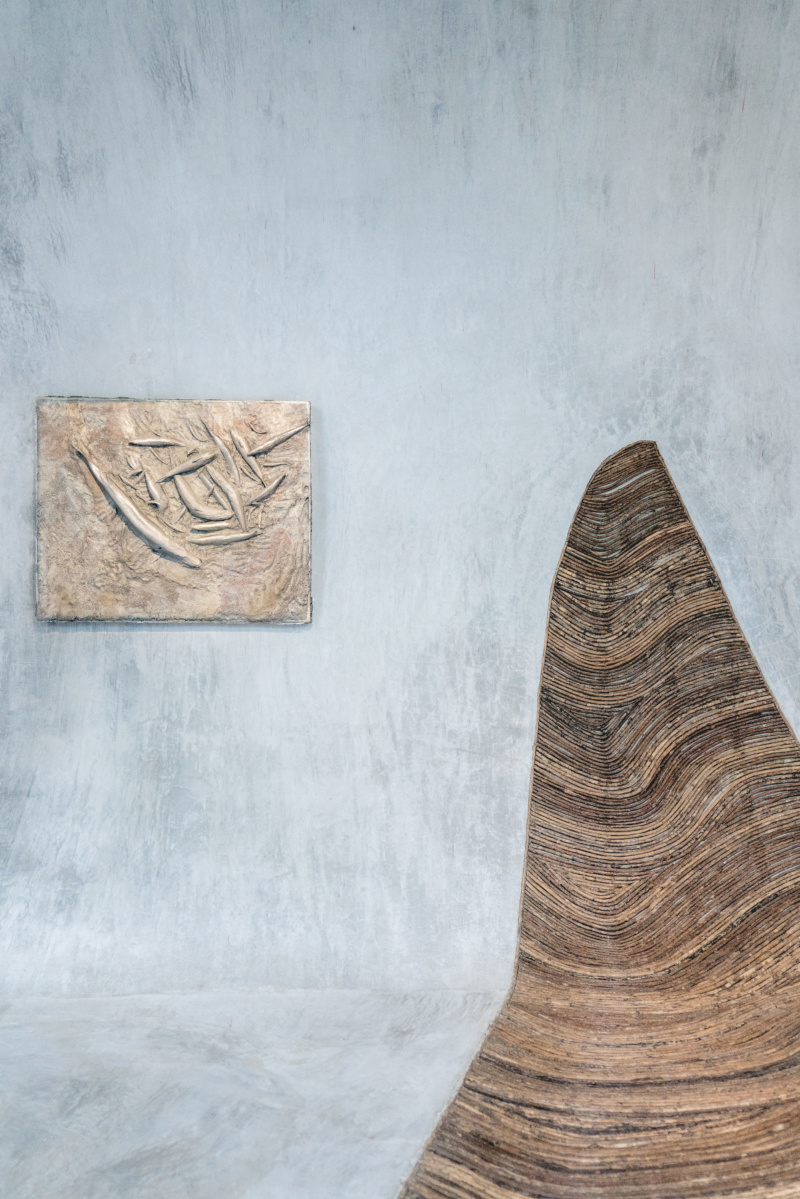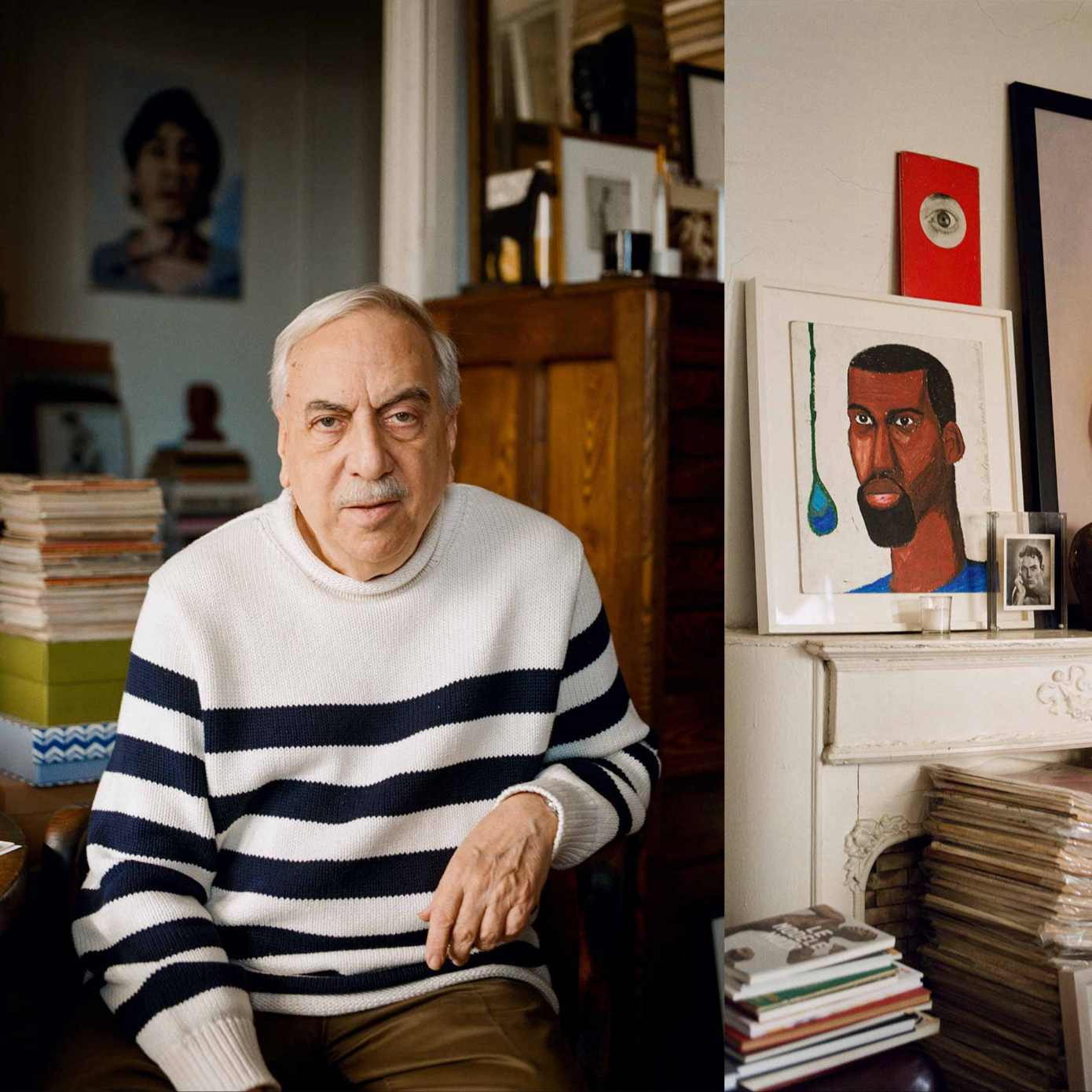
Just between the Caribbean sea and the jungle of Mexico’s Quintana Roo region sits the recently opened IK LAB—an unusual contemporary art gallery conceived by Argentine Roth (Eduardo Neira), who has lived in Tulum for decades and is the owner of the eco-hotel Azulik, which is host to IK LAB. The bright curving space feels at once expansive and rustic, with a thatched roof and circular windows open to the lush exterior. For the gallery’s second show, Paris-based curator and art advisor Claudia Paetzold, who is also IK LAB’s artistic director, has brought together Katinka Bock, Guillaume Leblon and Gabriel Rico—three international, conceptually-driven artists—for “Configurations,” on view through January 31, 2019. Leblon, who now lives in New York, but maintains a studio in Guadalajara, spoke with Cultured’s Sara Roffino about the show, his practice and the relationship among the artists on view.
Your work plays a bit with the surreal, and IK LAB has a certain surrealism inherent in its existence as a contemporary art gallery in the middle of the Mexican jungle. Can you talk a bit about the play between the space and your work in this exhibition? I want to create installations and sculptures, which have a strong and seductive material presence and allow me to tell new stories. They are like fleeting memories, blurring the boundaries of real and surreal—which is very suitable for a unique place such as IK LAB, which is as far away from the gallery "white cube" as we know it as imaginable. They are objects where past and present converge and the evanescent and tangible merge. I am interested in exploring the space and the atmosphere of places and things, while I usually see architecture only from a functional point of view. The free standing “windows” which are located in the main exhibition space and the gallery's only smaller room, lead the visitors to observe the exhibition from multiple places and spaces. They create spaces within other spaces. Other works in the exhibition, such as Cuatro Peces Siguiendo and Fishes in the Vase explore the spatial development of existence. They are seemingly floating in the curved space. The form of the exhibition space, the boundaries, the surrounding environment and the climate of a location are all elements that highlight these qualities within my own works, adding multiple layers of perception.
You also have long-standing relationships with the other artists in the show, Katinka Bock and Gabriel Rico. What about their work resonates most with you and your practice? Katinka Bock and I both show with Galerie Jocelyn Wolff in Paris and have been in exhibitions together before. We take a very haptic approach to materials, play with the choice and combination of materials and utilize alienating effects. We collaborated for the exhibition “A Town (Not a City)” at Kunst Halle Sankt Gallen in St. Gallen, Switzerland, in 2008, when we were both Paris-based. “Dry man on a wet ground” (2008) was our first collaborative piece. It is composed of two elements, a limestone sculpture and a wooden one, which form an elegiac dramatization of the Mittelstadt and the sense of time passing that is often associated with it. The scene we created for the exhibition at the time bore attributes of a tale, yet an invented one, and alluded to the small-city as a historical literary topos. While we share an interest in looking at the world surrounding us and have a similar approach around inquiring the landscape, I feel Katinka’s position is more stagnant and stable, while I am intrigued to explore shifts and rupture. Gabriel Rico and I both have studios in Guadalajara, see each other regularly as friends and speak about our work. With him being one of the most interesting emerging artists based in Guadalajara I look forward to see how his work develops.

Thinking about the works on view at IK LAB in relationship to the performance you presented at the Front Triennial, your work seems to play with an inescapable sense of displacement. (Where is the front or the back of the curtain? Why is this conversation so uncomfortable? Why is this play taking place in a vacant house?) What is there for viewers to gain from this sensorial dislocation/discomfort?The theater play Busy Time, which I wrote together with Thomas Boutoux and which was shown in July this year at the Front Trienniel follows our first collaborative project The Interview, originally created in 2007. The Interview is a play for two actors and presents a conversation between an artist and an art critic going awry. Inspired by the sometimes awkward exchanges that occur during studio visits it highlights the many misunderstandings, mutual embarrassments, passionate arguments, and declarative statements that these interactions often produce. Busy Time focuses on our current artistic preoccupations. It reflects on how the world in which we work and live has changed during the last decade, since The Interview. Thomas and I continue to use collaborative playwriting and theatrical dialogue as instruments to discover one’s own identity and meaning in the world through making observations and asking questions. If the plot of The Interview can be characterized by internal struggles and the search for clarity, then Busy Time embraces the external, seeking to blur the boundaries of the play and outside world. Part of blurring the boundaries is that it is staged in a vacant house in Cleveland where visitors can also access different representations of the play. The house was not only a venue and backdrop for Busy Time, but a fifth actor in the story. It had its own “life": mail was regularly delivered, necessary maintenance was performed, and improvements were made during the run of Busy Time. This lifecycle, which is independent from the play, during the three months of the Front Triennial was a key element. The text of the play, movement of the four actors, and community in the house stem from an untraditional theoretical practice that aims to address the realities of what it means to live today.
Craving more culture? Sign up to receive the Cultured newsletter, a biweekly guide to what’s new and what’s next in art, architecture, design and more.



